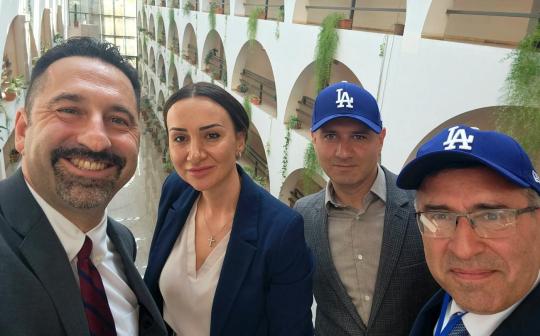One year on, Is NYC’s internet master plan making the city smarter?

For cities of every size across the world, high quality internet access continues to be a priority. This technology is required for participation in the 21st century global economy. The digital infrastructure of smart cities also requires fast and reliable Internet services to support capabilities such as smart waste and lighting, self-driving cars, smart energy grids and better government experiences.
Connected cities are smarter cities.
Despite admirable efforts by the private sector, even leading global cities continue to have big gaps in internet coverage. It’s a painful reminder of a societal digital divide that persists for billions of people across the world.
New York, a progressive city of almost nine million people, has long acknowledged its connectivity challenges. Surprisingly, in the third decade of the 21st century, two in five New Yorkers are under-connected or not connected at all. Fed up with the status quo, the city in January 2020 announced its Internet Master Plan.
One year on, I checked in with John Paul Farmer, New York City’s current chief technology officer, and asked him whether the plan was working and making the city more connected and smarter.
On a mission to do good
Farmer — whose career has included impressive stints in investment and private banking, a director of civic innovation role at Microsoft and time as an innovation adviser to the Obama administration — said he’s always been attracted to opportunities where he can have the potential for greatest impact. He landed his current role after writing a memo to Mayor Bill de Blasio suggesting ways to improve how the city functions.
At its core, he suggested putting in place a technology and innovation program that would do good now and far beyond his tenure. Expanding internet access for New Yorkers would quickly become a big part of Farmer’s mission to do good.
New York’s internet plan is based on the city making smart investments in technology infrastructure, increasing market competition and public-private partnerships. Done right, these core objectives would bring internet service costs down. In addition, easier utilization by a wide range of stakeholders of existing and new city-developed infrastructure means more partners can participate in internet delivery.
The intended result: more internet service options, higher quality experiences and lower costs for more people.
Early results
One year is not a long time when it comes to massive infrastructure projects, but the early results are positive so far. Internet service is expanding at a decent clip. In one initiative, the city made more than 300 public housing buildings available for use by third parties for new internet infrastructure.
Expanding access hasn’t been limited to just providing more connectivity options. Farmer and his team also deployed thousands of tablets to schoolchildren and older adults and partnered with a provider to deliver digital skills to these users. Metrics derived from this effort have demonstrated both life-changing and life-saving outcomes.
Having observed these early successes, de Blasio last July committed $157 million in capital funds to accelerate the work. To date, it’s the largest single investment in internet infrastructure by a U.S. municipality.
Beyond the important goal of eliminating New York’s digital divide, connectivity should have real economic positives too. If all goes to plan, by 2045 the plan will have resulted in $142 billion in additional gross city product, $49 billion in personal income increases and 165,000 new jobs.
Of course, now there’s an interest in accelerating the plan. Success makes the assumption that future administrations will carry over the master plan and run with the baton.
Advice for city leaders
One year on, Farmer said he’s found that this is both a rural and urban challenge. In cities, he said it’s most often an affordability issue.
He suggested that others consult the New York City Internet Master Plan and see what they can learn from it. One worthwhile lesson is that Farmer’s team relied on attaining good data about a wide range of city dimensions, such as building assets, to inform their decision-making.
Farmer suggested working with many different partners in the public and private sectors to enable as many participants as possible to deliver the various aspects of internet connectivity. Specifically, Farmer said it’s important to reduce burdensome bureaucratic barriers.
He said he hopes there can be more cooperation between state and federal agencies in supporting municipal internet goals too. Farmer believes eradicating the digital divide requires a national moonshot effort. His hope is that we’ll use the 2020s to solve this problem. Farmer’s belief — which is one that I share — is that if Americans are to thrive in the future, every one of them requires access to high-quality, fast and affordable internet access.
 Jonathan Reichental is the former chief information officer of Palo Alto, California. He’s now an instructor at several institutions, including the University of California, Berkeley, and online through LinkedIn. He’s the founder and CEO of the advisory and investment firm Human Future, and the author of Smart Cities For Dummies.
Jonathan Reichental is the former chief information officer of Palo Alto, California. He’s now an instructor at several institutions, including the University of California, Berkeley, and online through LinkedIn. He’s the founder and CEO of the advisory and investment firm Human Future, and the author of Smart Cities For Dummies.
You can also check out a new course he’s offering, called “Cryptocurrency Demystified,” on Speakeasy.






